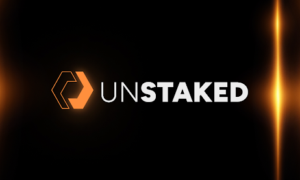In recent years, the insurance industry has been exploring the potential of blockchain technology to streamline processes and reduce costs. One promising technology is IOTA, which uses a unique architecture called the Tangle to enable secure and decentralized data storage and transfer. This analysis will examine the use cases of IOTA in the insurance industry and real-world examples of IOTA in Insurance. Learn about automated crypto trading at quma-ai.com. You can also start trading crypto and get quality trading signals.
IOTA’s Use Cases in the Insurance Industry
IOTA has several use cases in the insurance industry that can bring significant benefits to both insurers and policyholders. These use cases are made possible by IOTA’s unique architecture and features, such as smart contracts, tamper-proof data storage, and real-time data access.
One potential use case of IOTA in the insurance industry is smart contracts for usage-based insurance. With IOTA’s Tangle architecture, smart contracts can be used to automate the process of calculating premiums based on actual usage data, such as miles driven or hours spent using a particular product. This can lead to fairer and more personalized insurance policies for policyholders, as well as lower costs and reduced risk for insurers.
Another use case for IOTA in the insurance industry is supply chain and product traceability. The Tangle’s ability to store and transfer data in a tamper-proof manner can help insurers track the entire supply chain of a product, from its origins to its final destination. This can help insurers assess the risk of insuring a particular product, as well as prevent fraud and reduce costs.
Identity verification and authentication is another area where IOTA can be used in the insurance industry. The Tangle’s secure and decentralized data storage can help insurers verify the identities of policyholders and prevent fraud. For example, IOTA can be used to store and verify the authenticity of identity documents, such as driver’s licenses or passports.
Finally, IoT-enabled insurance is another potential use case for IOTA in the insurance industry. The Tangle’s ability to handle large volumes of real-time data can enable insurers to offer insurance policies that are tailored to the behavior and needs of policyholders. For example, IoT sensors can be used to monitor the condition of a property or a vehicle in real-time, and this data can be used to adjust insurance premiums or trigger automatic payouts in case of an event.
Overall, IOTA has several use cases in the insurance industry that can bring significant benefits to both insurers and policyholders. These use cases leverage IOTA’s unique features and architecture to enable more personalized, secure, and cost-effective insurance policies.
Real-World Examples of IOTA in Insurance
One example is the partnership between IOTA and the Danish insurer, UNIQA. UNIQA has used IOTA’s Tangle to enable secure and decentralized storage of telematics data from vehicles. This data is used to calculate premiums for usage-based insurance policies, based on factors such as the distance driven and the driver’s behavior. By leveraging IOTA’s tamper-proof data storage and real-time data access, UNIQA has been able to offer more personalized and cost-effective insurance policies to its customers.
Another example is the collaboration between IOTA and the Australian insurance startup, Oyster. Oyster has used IOTA’s Tangle to enable secure and decentralized data storage for its peer-to-peer insurance platform. Policyholders can submit claims and receive payouts directly through the platform, without the need for intermediaries. This has led to faster claims processing and reduced costs for both policyholders and insurers.
A third example is the partnership between IOTA and the German energy company, Innogy. Innogy has used IOTA’s Tangle to enable secure and decentralized data storage for its electric vehicle charging stations. This data is used to calculate insurance premiums for electric vehicle owners, based on factors such as the charging behavior and the battery condition. By leveraging IOTA’s real-time data access and secure data storage, Innogy has been able to offer more tailored and cost-effective insurance policies to its customers.
Overall, these real-world examples demonstrate the potential of IOTA in the insurance industry to enable more personalized, secure, and cost-effective insurance policies. By leveraging IOTA’s unique features and architecture, insurers can streamline their processes, reduce costs, and offer better outcomes for their customers.
Conclusion
In conclusion, IOTA has significant potential to transform the insurance industry through its unique architecture and features. With its ability to enable secure and decentralized data storage, real-time data access, and smart contracts, IOTA can enable more personalized, cost-effective, and secure insurance policies for both insurers and policyholders. Thanks for reading till the end and I hope the guide is informative and useful.
Disclaimer: This is promotional marketing content. The presented material by no means represents any financial advice or promotion. Be sure to do your research and acknowledge the possible risks before using the service of any trading platform.



































